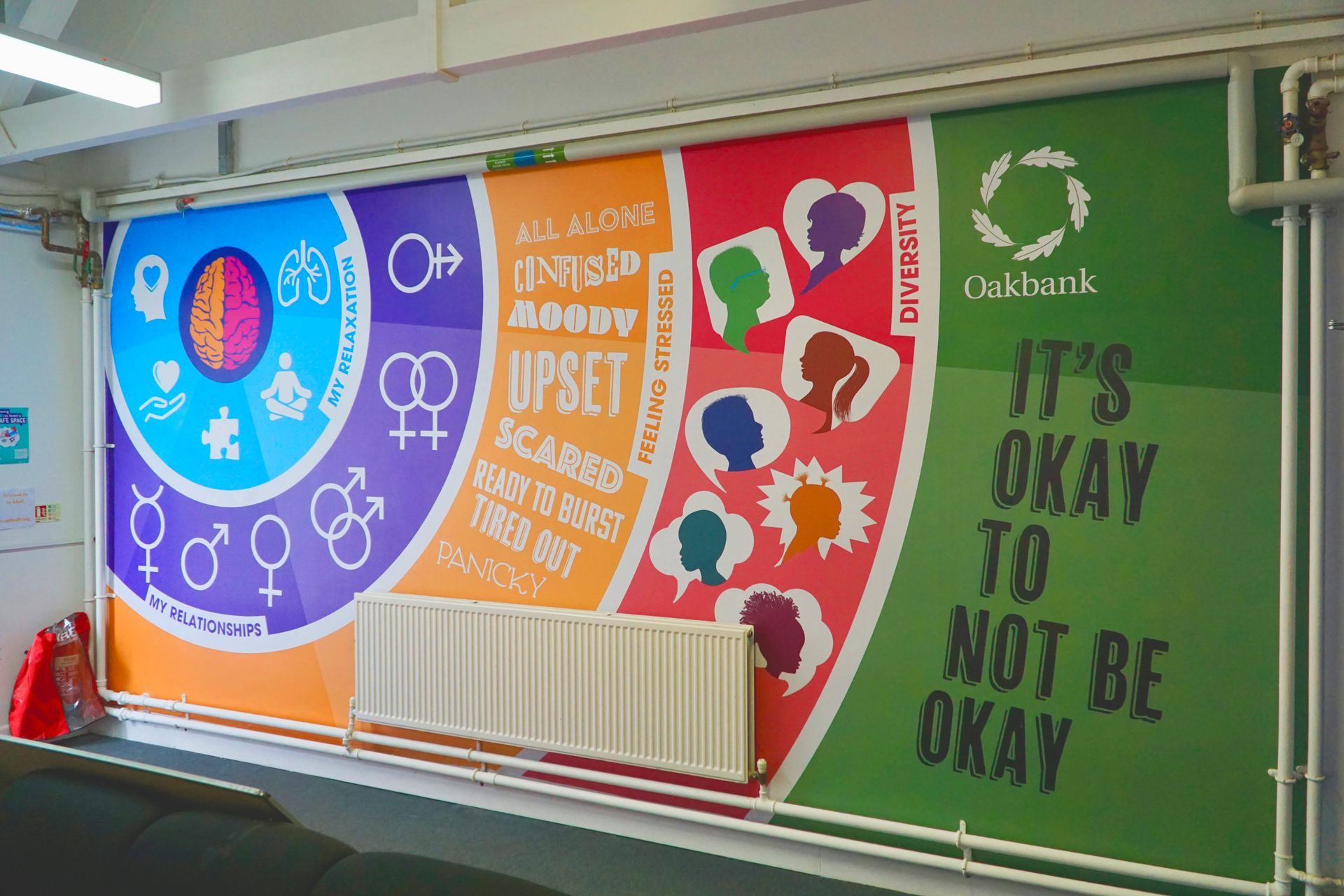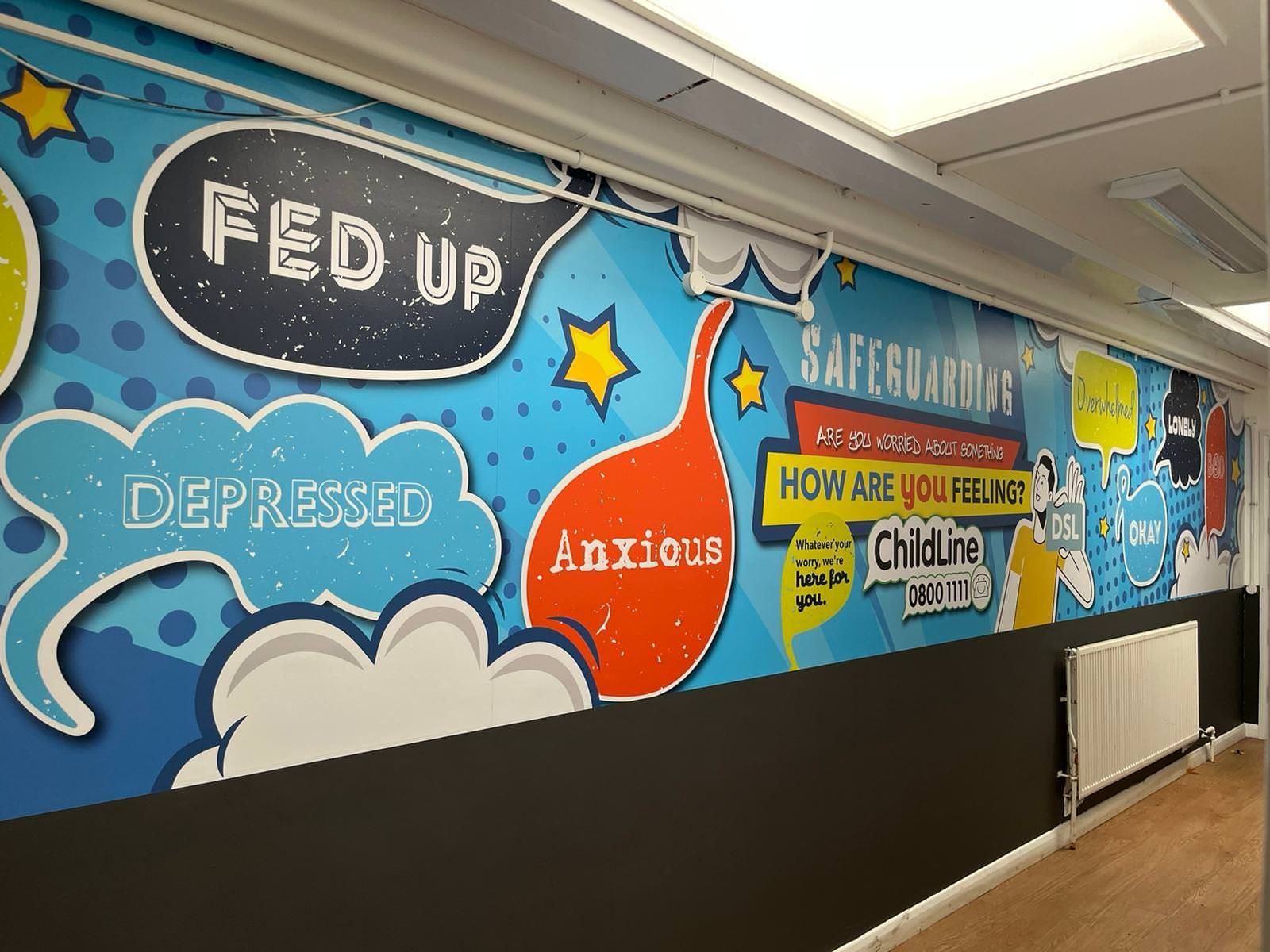Impact on pupils 17
Graphics can help teach children about emotions and social interactions by depicting feelings and scenarios. This can help them better understand and express emotions, recognise facial expressions, and show empathy towards others. Graphics can also be a helpful tool for fostering social skills in designated areas, like social corners or reading spaces.

Using Wall Graphics to Boost Social Learning
- Wall visuals depicting emotions and social scenarios can help children grasp and communicate their feelings effectively. They can also help them recognise expressions and show empathy towards others. These can be particularly advantageous in specific social zones or cosy reading spots.
Elements are crucial for fostering social learning.
Facial Gestures;
- Craft emotion charts showcasing feelings alongside corresponding expressions and body gestures, ensuring each emotion is distinctly labelled.
- Children can engage with features, like moving parts to match expressions, with emotions or adjust features to explore various feelings.
Scenarios in settings;
- Create role-playing scenarios that showcase interactions, such as sharing and working together while resolving conflicts, with characters that children can connect with.
- Behavioural Guidelines should feature visuals showing reactions and actions in social settings.
- Let's showcase murals that narrate stories of empathy and kindness, emphasising characters assisting one another and demonstrating compassion in action.
- Make sure to have various characters from cultures and backgrounds to create an atmosphere that welcomes everyone's unique abilities and experiences.
Optimal Positioning for the Greatest Effectiveness
Social Hangout, Cozy Reading Spots;
- Let's set up emotion walls with emotion charts and interactive features in places where children come together for socialising or quiet reading to help them explore their feelings in an environment.
- Let's decorate reading corners with stories that share messages of understanding and compassion through engaging visuals.

Let's make some emotion wheels or charts for kids to express and understand their emotions while doing things in class.
Regarding hallways; Shared spaces;
- Encourage children to consider the feelings of others by creating scenarios and questions that prompt empathy, incorporating elements, like footprints or arrows, to guide them through the story.
- Conflict Resolution Zones can be established by incorporating aids that outline the steps and tactics for addressing conflicts. For instance, "Pause and reflect ", "Engage in dialogue ", and "Listen actively ". Seek resolution."
Let's devise a plan for putting things into action.
The process of designing ;
- Incorporate feedback from teachers and parents during the design phase to ensure that the visuals align with objectives and connect with children's encounters.
- Work with designers specialising in settings to develop captivating and persuasive visuals that enhance engagement.
Selecting materials;
- When selecting materials for children to use and handle safely and reliably with kids in mind.
- Choose eco alternatives by selecting materials to support environmental stewardship.
Professional Setup;
- Ensure your installation is done by a professional to guarantee safety and a successful outcome while preventing alignment or damage issues.
- Ensure the graphics are placed at a convenient and visible height for children to see and reach easily.
Regular Enhancements;
- Please clean and maintain your graphics to keep them fresh and engaging.
- Plan for updates to bring ideas and maintain an engaging and lively atmosphere.
Wall graphics showcasing social learning illustrations.
Emotion Chart Display Wall;
- Create a wall that showcases expressions and emotions labelled as "joyful ", "upset ", "furious ", "enthusiastic," and "bewildered." Incorporate features such as eyes and mouths for added engagement.
- Encourages children to identify and label feelings to develop their awareness and understanding.
Wall art depicting a social gathering scene;
- Create a mural that shows situations like sharing toys and assisting a friend while resolving conflicts, using speech bubbles for conversations and thought bubbles to convey emotions.
- Children learn about behaviours and develop empathy through examples of everyday interactions.
"Stories of Empathy. Acts of Kindness"
- This mural depicts a narrative in which characters engage in acts of kindness and empathy, such as assisting those in need and resolving conflicts peacefully through understanding.
- Emphasises the significance of empathy and kindness while urging children to incorporate these behaviours into their lives.
- Create a wheel featuring emotions that kids can spin to express their feelings, complete with visual hints and labels for each emotion.
- Helping children express and understand their emotions is essential for promoting self-awareness.
Closing Remarks
Decorative wall designs can boost kids' social learning by showcasing images depicting emotions and social scenarios. They beautify the learning space while offering educational advantages, such as aiding children in grasping and articulating their feelings, recognising facial expressions, and showing empathy towards others. These help cultivate a nurturing and inclusive environment conducive to students' well-being and social growth.










